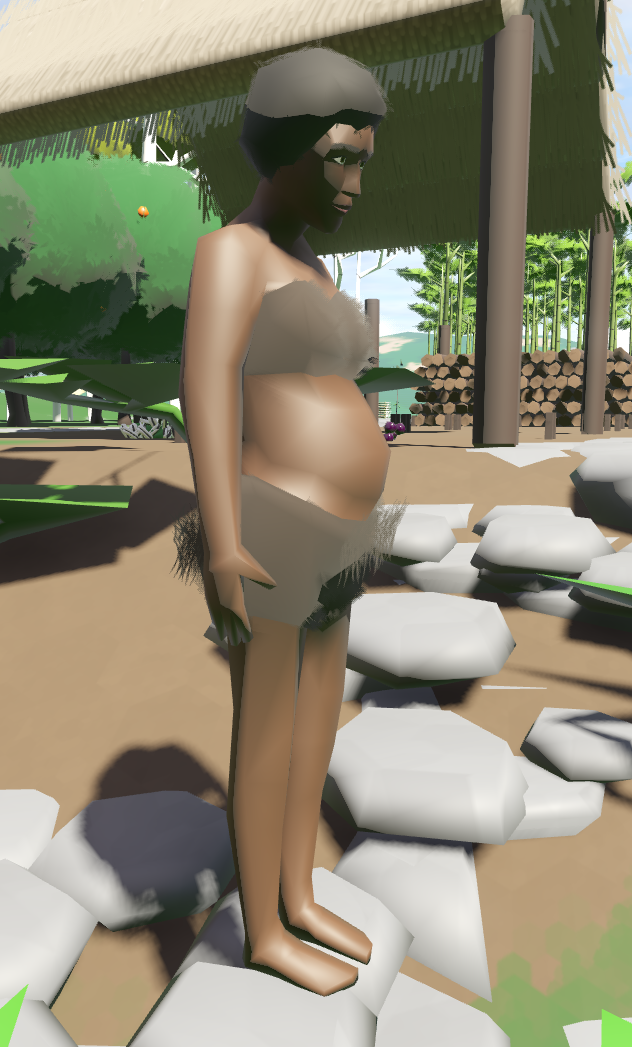Guide:Population Management

|
Overview
Population Management refers to the practice of increasing or decreasing the overall number of Sapiens in your tribe.
Increasing Tribe Population
The following describes net positive population mechanics in the game that will increase your tribe population.
Pregnancy and Births
Sapiens are able to mate and give birth to children. Within the game there is a random periodic check to see if a pregnancy will occur based on a set of rules.
Rules for the Female
- The Sapien must be female.
- The female must not already be pregnant.
- The female cannot be a nomad at the time of the check.
- The female must be an adult, but not an elder.
- The female must be young enough that the pregnancy will not extend until they become an elder.
- The female's mood must be Mildly Negative or higher (3 Stars).
- The female must not be hungry.
Rules for the Male
Once a female sapien has passed the above criteria the game then checks to see if a suitable father is available using the following rules:
- The Sapien must be male.
- The male must not be a child (can be an adult or an elder).
- Must not have a close family relationship with the female.
At this point a pregnancy will occur and the father will pass a skin color gene, a hair color gene and an eye color gene to be combined with the females to determine the characteristics of the baby.
Tips for Maximizing Pregnancy Chances
While births will help keep the population up, it is very hard to dramatically increase the population relying on births alone as the number of births doesn't reliably create a sustainable population - the population will decrease over time if no other population increase methods are used. There are however a few things you can do to ensure you are maximizing this method and the number of pregnancies that will happen in your tribe.
- Pair young female and male couples together by setting them in adjacent beds. The proximity to each other while they are idle and sitting on their beds will improve the relationship score between them (They won't always sit together when idle but this is about maximizing, not guaranteeing)
- Reduce workloads for your planned pairs so the sapiens are idle and sitting next to each other more.
- Make sure the other basic rules are met - ensure they aren't hungry and have musicians playing music to keep the mood levels of the tribe up.
Nomadic Tribe Recruitment
Another method for increasing your tribe's numbers is to recruit new sapiens from wandering nomadic tribes.
Rules for Nomadic Tribe Spawning
Every 0.5 to 1.5 game days the game will attempt to spawn a new nomadic tribe into the game. During this process, a set of samples are taken to see if a spawn will take place based on an initial distance of 300m from your Sapiens. Should there be water between the nomad proposed starting point and your sapiens or the point is not at least 280m near a sapien, the spawn will fail.
The nomadic tribe once spawned will target different locations based on their intention:
- Food Raid - The nomadic tribe will target one of your storage areas containing food.
- Friendly Visit - The nomadic tribe will head towards a Campfire.
- Cautious Visit - The nomadic tribe will head towards a Campfire.
- Just Passing Through - The nomadic tribe will walk through your village and continue on.
Increasing Nomadic Tribe Recruitment Success
There are some things you can do to maximize success in recruiting new sapiens from a nomadic tribe.
- Settling near a river or a coast will dramatically reduce the number of successful spawns as the water will prevent spawning.
- Ensure you have adults and not elders with the Diplomacy role. Elders are slower which can sometimes result in the nomads leaving before they can be caught up to by the elder.
Decreasing Tribe Population
The following describes net positive population mechanics in the game that will increase your tribe population.
